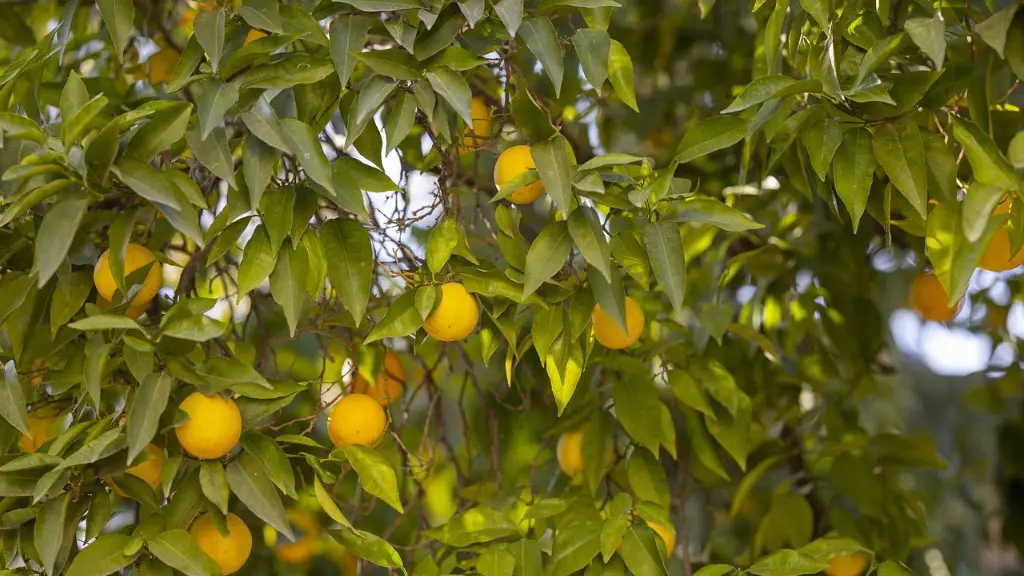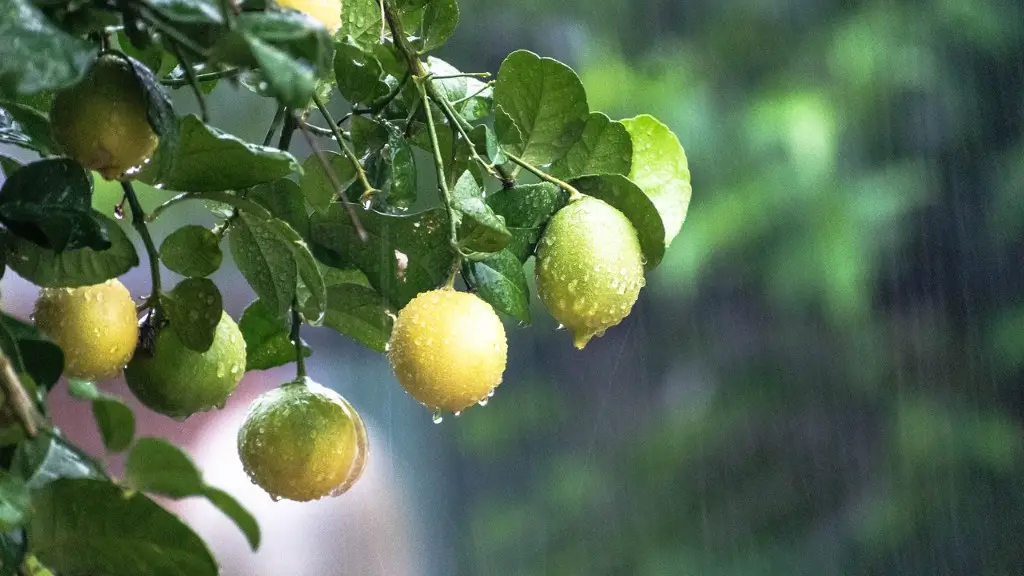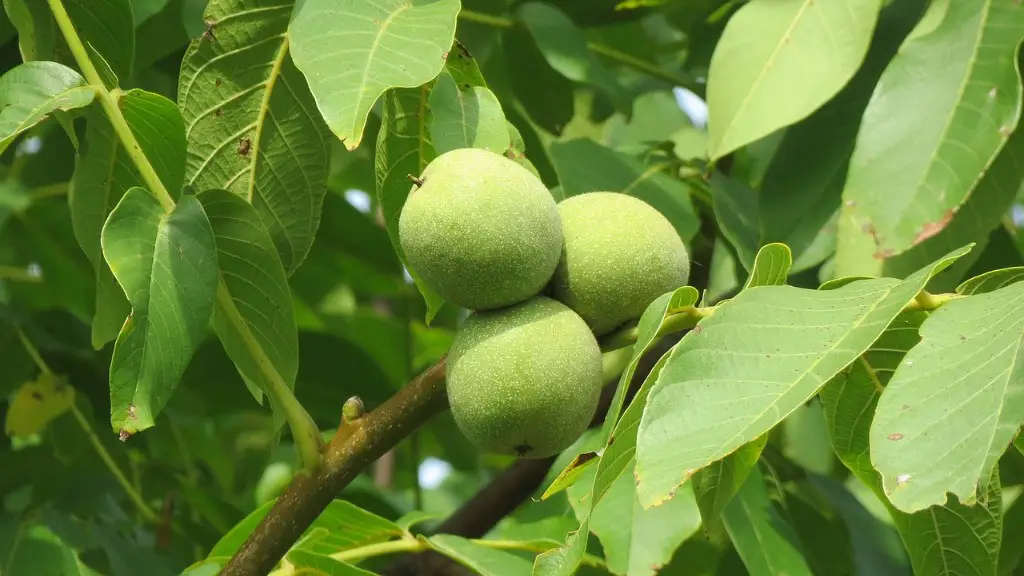Lemon trees are a popular citrus tree with a flavor that gives dishes a zesty, citrusy kick. For many home gardeners, knowing how many years a lemon tree will take to fruit from a seed is an important question. Lemon trees grown from seed can take up to 8-10 years to start fruiting, though this timeline can vary. On the other hand, if you start with a young tree from a nursery, it can take as little as 2-3 years to start producing fruit.
Lemon trees grown from seed will often take longer to grow than those not planted from seed, but the benefits of starting from seed can outweigh the wait. Lemon trees grown from seed tend to be hardier and more disease-resistant than those grown from saplings, and can even produce more flowers and fruit than nursery-grown trees. Additionally, some citrus varieties are available only as seeds, so this can be a great and cost-effective way to find your favorite variety.
The amount of time it takes for a lemon tree to start producing fruit also depends on environmental conditions and tree care. Lemon trees grown in areas with more sunlight, for example, may bear fruit faster than those in areas of low light. Similarly, trees that receive regular and appropriate fertilization, pruning and water will often fruit more quickly than those that are neglected. Once established, a healthy lemon tree can remain productive for up to 15-20 years.
In some climates, it may be possible to harvest fruit from a lemon tree grown from seed in as little as five years. This timeline also varies widely, however, and many hobby gardeners report that it is closer to seven or eight years before their trees begin to produce fruit.
Overall, it is important to keep in mind that the timeframe for when a lemon tree grown from seed will start fruiting is largely dependent on the type of tree and environmental factors. Many home gardeners report that they can begin harvesting lemons from their trees in as little as two to three years, however, this is not a universal truth and other factors should not be discounted.
Soil Requirements for Growing Lemon Trees from Seeds
To ensure the best conditions for growing lemon trees from seed, it is important to provide the right soil conditions. Lemon trees prefer a light, well-aerated soil with a pH of 6-7.5. Additionally, the soil should be able to hold water but still drain easily to ensure a healthy root system. Mixing mulch or slow-release fertilizer into the soil can help maintain maximum plant health.
It is also important to ensure that the soil is free of weeds, and to make use of a weed-resistant fabric or mulch once the tree has been established. Proper pest control can also help promote proper health, especially if the tree is kept outdoors. Last but not least, excellent soil drainage is important for avoiding root rot.
Best Practices for Growing Lemon Trees from Seeds
Following the best practices for growing lemon trees from seed can help ensure swift and bountiful growth. Lemon seeds should be planted at a depth of about one inch in pots that are at least ten inches in diameter. Before planting, the seeds should be stratified in water for up to a week to soften their hard outer coat. Planting in spring in most areas can also encourage quicker germination.
Once the trees have been planted, they need to be watered regularly but not overwatered. This can be done 2-3 times a week under normal conditions, but less if the soil is already moist. Additionally, lemon trees should be kept at temperatures between 60-85 degrees Fahrenheit and in well-ventilated areas to ensure the healthiest growing conditions. Pruning should also be done in fall to encourage strong and healthy growth.
Harvesting & Caring for Lemon Trees Grown from Seeds
Lemon trees grown from seed can often take longer to fruit than those from saplings, but the yield can be quite satisfying. To check for ripeness, observe the color of the fruit and taste it. If it is still too sour, leave it on the tree for another week or two before harvesting. The lemons should remain on the tree for a period of two to three months, though this can vary depending on the climate.
To get the most out of a lemon tree’s harvest, it is important to care for it properly. Watering and fertilizing regularly, for example, can help to ensure that the tree remains healthy and productive for the maximum amount of time. Additionally, regular pruning will help to encourage strong and healthy growth and prevent the canopy from becoming too thick and unmanageable.
Tips for Growing Lemon Trees from Seeds Outdoors
For gardeners living in warmer climates, growing lemon trees from seeds outdoors is a viable option. These trees will fare best when planted in full to partial sun, and if protected from cold winter winds and heavy rains. When planting outdoors, it is important to consider what type of soil the tree requires and the prevailing climate, both of which can affect lemons’ growth and quality.
Additionally, outdoor lemon trees are more likely to be exposed to pests and disease, so appropriate pest control measures should be implemented to reduce the potential impacts. The soil should also be tested regularly to ensure that it is appropriate for optimal growth.
Growing Lemon Trees from Seeds Indoors
Growing lemon trees from seed indoors is a viable option for gardeners living in more temperate climates with months-long winters. In addition to providing the same conditions as outdoor lemon trees, such as well-draining soil, adequate water and regular pruning, there are also some other considerations to keep in mind. For example, the lighting and temperature need to be closely monitored and kept within a certain range to ensure that the tree remains healthy and productive.
Additionally, there should be enough room for the tree to grow, as lemon trees grown indoors can reach heights of up to 15 feet over time. If space is an issue, dwarf citrus trees are a viable option and can produce high-quality lemons in much less space.


